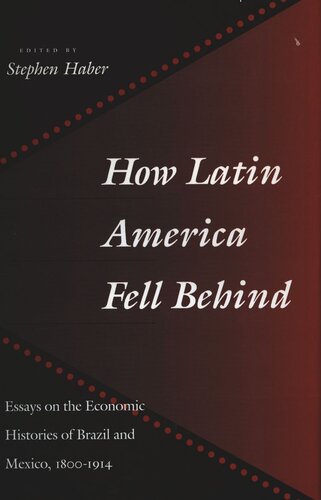

Most ebook files are in PDF format, so you can easily read them using various software such as Foxit Reader or directly on the Google Chrome browser.
Some ebook files are released by publishers in other formats such as .awz, .mobi, .epub, .fb2, etc. You may need to install specific software to read these formats on mobile/PC, such as Calibre.
Please read the tutorial at this link: https://ebookbell.com/faq
We offer FREE conversion to the popular formats you request; however, this may take some time. Therefore, right after payment, please email us, and we will try to provide the service as quickly as possible.
For some exceptional file formats or broken links (if any), please refrain from opening any disputes. Instead, email us first, and we will try to assist within a maximum of 6 hours.
EbookBell Team

4.7
96 reviewsIn 1800, the per capita income of the United States was twice that of Mexico and roughly the same as Brazil’s. By 1913, it was four times greater than Mexico’s and seven times greater than Brazil’s. This volume seeks to explain the nineteenth-century lag in Latin American economic development. The essays break with longstanding dependency traditions in Latin American historiography that focus on foreign influences to explain Latin American underdevelopment. Instead, they apply the approaches and methods of the New Economic History—which encompasses a wide arsenal of analytic tools and quantitative techniques informed by neo-classical economic theory—arguing that the causes for Latin America's laggard economic growth in the nineteenth century had far more to do with internal political and legal structures than putative external dependency. The volume is marked by geographical and topical diversity. Four essays deal with Mexico, two with Brazil, and two compare the two countries. Topically, two essays present overviews of nineteenth-century economic performance, two deal with the impact of independence, two deal with capital markets, and the remaining three address regional growth, the impact of railroads, and the economic effects of "culture." The editor's introductory essay surveys the history of economic growth theories and Latin American economic historiography.